ATENA Development
ATENA 5.9.0 with unique capabilites will be released this summer
Dear ATENA users and prospects,
we hope you are doing well, staying safe and healthy.
Our previous ATENA 5.7 version already represented a huge step forward with some remarkable new features such as ASR, corrosion or durability modelling. Before we finished the previous version, we had already started working on ATENA 5.9 knowing that we would like to enhance the existing features as well as add some new ones.
We proudly announce that have successfully accomplished our mission by preparing a new ATENA 5.9. for you. Not only did we further develop and tested the reinforcement modelling and durability, but we also added some exciting new features such as 3D printing of concrete, improving our program interface (ATENA Center) in order to simplify the navigation through ATENA, and modifying the program protection system, by enabling you to use software hardlocks instead of regular USB protection keys. It means accessing ATENA is now a lot easier, especially for those who have to deal with difficult custom processes when we are shipping the software to their attention.
Do not miss a chance to evaluate a 5.9. beta version by renewing your ATENA maintenance license. In case you are actively using ATENA and your maintenance is valid, please do not hesitate to ask us to test this new beta version or follow the news on our website.
We encourage you to send us your comments or tips for improvements. This would be highly appreciated. Thank you in advance.
We look forward to continuing our cooperation and launching new partnerships with those of you who are not yet ATENA users.
With best regards from Prague
Your Cervenka Team |
ATENA v5.9.0 new features
ATENA v5.9.0 will be released in May as a public beta version. All users with valid maintenance support are eligible for downloading and evaluating this new step in ATENA development.
Among others it contains the following major new developments and changes:
- ATENA Center is a new frontend interface, which provides an easy navigation through various ATENA system software tools, tutorials, documentation and example problems.
- 3D printing modelling of concrete can be simulated by ATENA now. In addition to the numerical model, the user can provide the printing path and printing speed along with time dependent material properties to simulate the printing process. This new feature can be used to simulate and verify the structural stability during the printing process or the behavior of the final structure taking into account the effect of the printing process on its final strength, reliability or durability. |
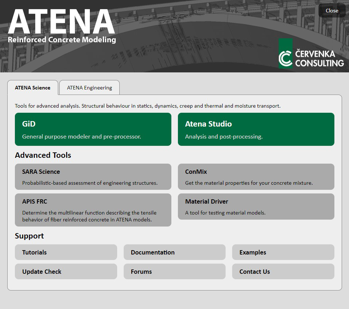
Fig. 1: ATENA Center for easy navigation and access to programs, tools, documentation, tutorials and examples.
|
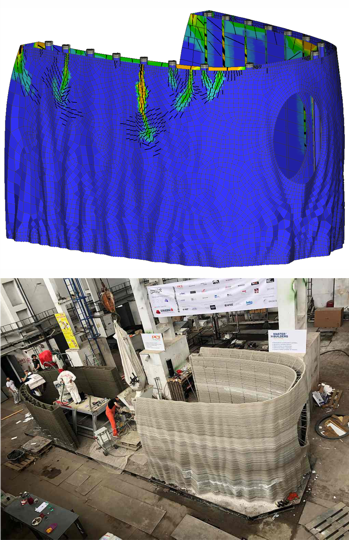
Fig. 2: Modelling of 3D printing is one of the main new features in ATENA. The figure shows the cracking in the simulation of a 3D printed concrete segment for a pilot building in Czech Republic.
|
- APIS FRC – new tool for the automatic determination of input data for Fibre-reinforced concrete materials (FRC) from standard three or four point bending tests.
- Automated report generation allows for tailored generation of typical reports that can be further customized or enhanced based on the requirements of each project you are working on.
- Durability and corrosion modelling has been enhanced and input dialogs are simplified with generation wizards and help tools for easier definition of input parameters for chloride ingress, carbonation and corrosion modelling.
- New reinforcement cycling material was implemented on the basis of Dodds & Restrepo model, which supports more intuitive definition of input parameters for dynamic and seismic analysis of RC structures. In addition, the cycling reinforcement models are available now also for the smeared reinforcement model.
- Improved reinforcement bond model can consider the effect of reinforcement corrosion or high temperatures during fire analysis on the bond strength. This means the provided slip law is scaled by temperature and corrosion dependance laws.
- Software hardlocks are available for ATENA in addition to the standard USB protection hardlocks. This simplifies the distribution as there is no need for any shipping, and this option can be also advantageous for network installations.
- Plus many other minor improvements, additional increase in analysis and post-processing speed for large scale models, and various bug fixes. |
ATENA Success Stories
|
Drlík, P., Červenka, V., Červenka, J.: Biomechanical Simulation of Peyronie’s Disease, Applied Bionics and Biomechanics, vol. 2021, Article ID 6669822, 6 pages, 2021, https://doi.org/10.1155/2021/6669822.
This paper shows ATENA application to biomechanics. A pathological disorder of human penile function, known as Peyronie’s disease, is characterized by the formation of plaque particles within the tunica albuginea. The plagues in the shape of rigid plate form in the scars as a result of the imperfect healing process. |
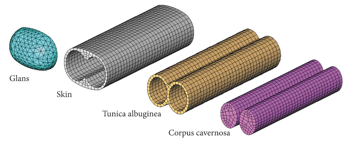
Fig. 3: Mesh discretization of the penis model.
|

Fig. 4: Von Mises stress distribution in tunica albuginea with plague. Case A.
|
Due to high stiffness, plagues are the source of pain and anomalous deformations during erectile penis function. The authors simulate the biomechanical behavior of the penile structure by a 3D finite element model. The numerical model is based on the real geometrical shape and the tissue structure with consideration of large nonlinear deformations. |
|
The penile erection is modeled by the initial strains imposed on the corpus cavernosa. The stress analysis is performed in a case study of various plague locations. The Peyronie’s syndrome manifested by the penis angular deviation simulated by the analysis is compared with the clinical data. The computational simulations provide a rational explanation for the clinical observations on patients. The objective is to apply the proposed modeling approach for the development and validation of treatment methods based on the application of shock waves. |
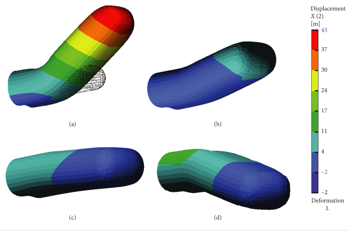
Fig. 5: Deformed state of the penis in scale 1 : 1 showing angular deformation due to Peyronie's disease.
|
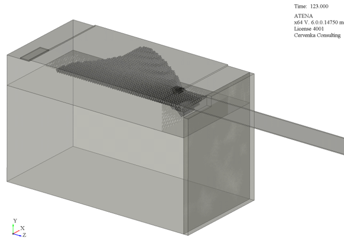
Fig. 6: Crack pattern at peak load 148kN, cracks > 0.05 mm in the static analysis.
|
Al-Saoudi, A., Kalfat, R., Al-Mahaidi, R., Cervenka J., Pryl, D.: Numerical and experimental investigation into the fatigue life of FRP bonded to concrete and anchored with bidirectional fabric patches, Elsevier Ltd., 4/2021, https://doi.org/10.1016/j.engstruct.2021.112335.
This paper shows application of ATENA fatigue model. It presents a summary of numerical and experimental investigations conducted to evaluate the fatigue performance of externally-bonded FRP laminates anchored with bidirectional fibre patch anchors. The anchored laminates were bonded to reinforced concrete (RC) blocks and subjected to various cyclic loading scenarios. Parameters such as the stress range, peak cyclic stress level, and the corresponding number of cycles prior to failure were noted. The results were used to generate an S-N curve relationships. |
|
A finite element model was developed and calibrated based on the experimental results. Modelling of experimental specimens was performed using the ATENA Science program for non-linear FEA in RC structures. Calibrated control and anchored models were developed to represent the actual specimen used in the experimental test. For validation purposes, all the material properties used in the calibration of FEA were based on experimental measurements as well as theoretical models and research findings. The simulations showed successful calibration modelling of static and fatigue tests that produced good correlations with the experimental measurements on the basis of ultimate static capacity, fatigue number of cycles, strain readings, and mode of failure.
ATENA modelling of anchored FRP strengthening tests in static and fatigue loading you can see in this video.
|
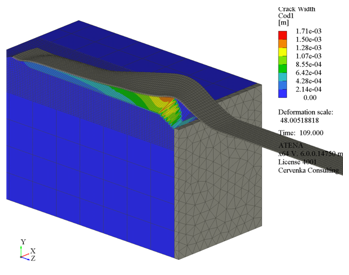
Fig. 7: Deformed shape and crack widths after failure due to fatigue loading.
|
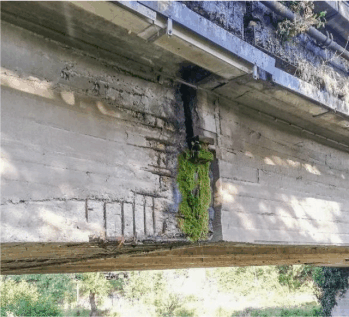
Fig. 8: Example of deteriorated Gerber saddles in RC road bridges.
|
Santarsiero, G., Masi A., Picciano V.: Durability of Gerber Saddles in RC Bridges: Analyses and Applications (Musmeci Bridge, Italy), Infrastructures 2021, 6, 25., https://www.mdpi.com/2412-3811/6/2/25
ATENA durability model has been used in this interesting paper on assessment of safety levels of critical infrastructures such as bridges that are essential to modern societies and their vital services. Bridges with reinforced concrete structures are subject to deterioration due to corrosion. Gerber saddles are among the key components which are especially exposed to environmental actions. In this paper, a framework for the durability analysis of these components is proposed, considering the simultaneous presence of permanent loads and environmental actions under the form of chloride ions. Nonlinear numerical simulations adopting the finite element code ATENA are performed, accounting for chloride ingress analyses. The presence of cracks (due to applied loads and/or design/construction defects) which may speed-up corrosion propagation, steel reinforcement loss, cracking and spalling, and their effects on the load-bearing capacity is considered. |
|
This framework has been applied to the Gerber saddles of a prominent reinforced concrete (RC) bridge, namely the Musmeci bridge in Potenza, Italy. Durability analyses made it possible to evaluate the saddles’ strength capacity at the time of construction, after forty-five years since the construction, and at an extended time of fifty years. The results show that corrosion can influence both the ultimate load capacity and the collapse mechanism. |
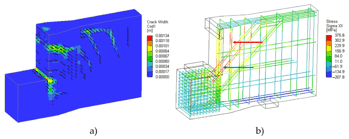
Fig. 9: (a) Crack pattern and (b) reinforcement stress distribution at peak load considering ATENA new reinforcement corrosion model.
|
Research and Development Projects
Projects completed in 2020
The research project "IdeMaS - Identification of high performance cementitious composites coefficients" (FV30244) supported by the Czech Ministry for Industry and Trade performed together with BUT Brno, Institute for Structural Mechanics during 2018 - 2020 has been successfully finished. The aim of the project was to develop software tools for parameter identification of high performance cementitious composites for the purpose of assessment their mechanical properties, and subsequent numerical simulation of structural components and structures made of these materials.
|
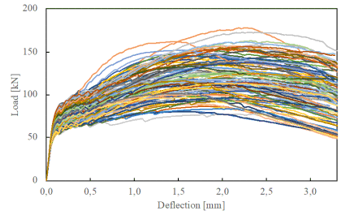
Fig. 10: Sensitivity analysis performed by SARA software is used to train an artificial neural network for rapid material parameter identification.
|
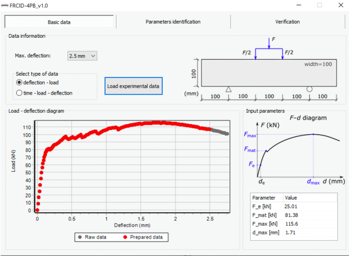
Fig. 11: User interface of the identification software FRCID-4PB for identification of material parameters from four-point bending test.
|
Three programs based on artificial neural networks and advanced approximation methods were developed: FRCID-4PB (see program screen shots) for identification of tensile fracture parameters from the four-point bending test, FRCID-S for identification material parameters from a shear test, and APIS for sensitivity analysis and identification of appropriate parameters for the numerical material model from arbitrary laboratory test or structural measurement.
The ANN-based programs offer direct transfer of the identified material model data into ATENA software for the nonlinear finite element analysis. |
|
These newly developed programs will be gradually integrated into the ATENA / SARA program system, and they will be available for customers in order to support advanced analysis of structures made of non-traditional cementitious building materials such as green concrete, fibre concrete, high performance concrete or UHPFRC.
Further details to the developed methods and programs are described at the web pages:
https://www.cervenka.cz/projects/rd-projects/idemas-a-project-supported-by-mit-within-the-fv-trio-program?utm_source=newsletter_may2021&utm_medium=email&utm_campaign=newsletter_may2021&newsletter_may2021=
https://www.fce.vutbr.cz/STM/lehky.d/frcid-4pb/frcid-4pb.html
https://www.fce.vutbr.cz/stm/lehky.d/frcid-s/frcid-s.html
https://apis.cervenka.cz/?utm_source=newsletter_may2021&utm_medium=email&utm_campaign=newsletter_may2021&newsletter_may2021=
|
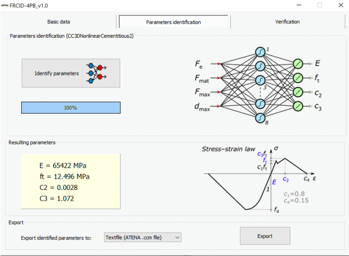
Fig. 12: Example of resulting ATENA material parameters identified by the artificial neural network.
|
ATENA Webinars 2021
1/2021
The first topic of this new series of webinars was: How to use nonlinear analysis in the design and assessment of reinforced concrete structures.
The seminar discussed the safety formats used with nonlinear analysis of reinforced concrete structures that are currently available in fib model code 2010 and in Eurocodes. |
|
On a selected example, which is a continuous reinforced concrete beam, the application of the safety formats is demonstrated together with useful tips and recommendations for:
- the development of a suitable numerical model in ATENA software
- the selection of material parameters
- recommendations for sensitivity analyses
- definition of a suitable loading scenario
- evaluation of results
Enjoy the recording from the first webinar on our YouTube channel. |
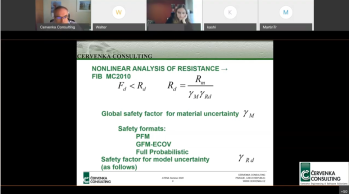
Fig. 13: Global safety format for nonlinear analysis has been discussed and presented in this seminar.
|
2/2021
The second topic of ATENA webinar was: Dynamic analysis and modelling of reinforced concrete structures in ATENA.
We discussed the possibilities and features in ATENA software for dynamic analysis of reinforced concrete structures. The webinar covers the following key items: |
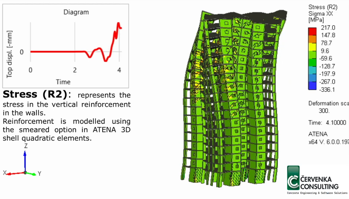
Fig. 14: Example of 18-storey building and its dynamic seismic analysis in ATENA.
|
- methods available in ATENA for dynamic analysis
- explanation of key input parameters
- an example from a validation study using CAMUS III benchmark problem is used to demonstrate the effect and importance of the key input parameters
- large scale examples of dynamic modelling in ATENA:
- 18th storey building with seismic accelerogram
- high rise building with impact blast loading
Enjoy the recording from the second webinar in our YouTube channel. |
Advanced ATENA User Seminar 2021 - online
|
Due to the continuing limitations on movement of people around the world, we decided to organize our regular user seminar on-line, as we did last year. We would like to invite you to participate in the seminar on June 16-18, 2021 (in English language).
Based on the feedback from our hotline support, we selected several topics, where we expect that ATENA users could benefit most from more in-depth explanation or background information:
- Overview of new ATENA version 5.9.
- Modelling of degradation effects: chlorides, carbonations, ASR, corrosion.
- Modelling of dynamic problems, free vibration and seismic accelerograms.
- Modelling of 3D printing.
- Modelling using 1D/3D beam elements and 2D/3D shell elements. |

Fig. 15: Prague castle in the spring.
|
Where You Can Meet Us On-line
|
June 1-3, 2021
The Biot-Bažant Conference
Evanston, IL, USA
Event website
June 14-16, 2021
fib Symposium
Lisbon, Portugal
Event website
June 30-July 2, 2021
22nd EFORT Annual Congress
Vienna, Austria
Event website
Mechanical Finder software will be presented.
August 29-September 1, 2021
EuroStruct
Padova, Italy
Event website
September 22-24, 2021
IABSE Congress
Ghent, Belgium
Event website
October 17-21, 2021
ACI Fall
Atlanta, GA, USA
Event website
November 24-25, 2021
Concrete Days
Prague, Czech Republic
Event website |
Recent ATENA Articles
|
AL-SAOUDI, A., KALFAT, R., AL-MAHAIDI, CERVENKA, J., PRYL, D., Numerical and experimental investigation into the fatigue life of FRP bonded to concrete and anchored with bidirectional fabric patches, Engineering Structures 239 (2021) 112335, https://doi.org/10.1016/j.engstruct.2021.112335, Elsevier Ltd
CERVENKA, J., JENDELE, L., SMILAUER, V., ZALSKY, J., Coupling of Chloride Ingress, Carbonation and Mechanical Response for Durability large Scale FE Modeling, Biot-Bažant Conference, June 1-3, 2021, Northwestern University, Evanston, IL
CERVENKA, J., SYKORA, M., CERVENKA, V., Uncertainty in Geometry and Modelling in Safety Formats for Nonlinear Analysis of RC Structures - Case Study, fib Symposium 2021, Lisbon, Portugal, June 14-16, 2021
PUKL, R., Structural performance assessment by digital twin approach. Keynote lecture at ACC16, the 16th Annual Concrete Conference (online) - Development of Infrastructures for Structural Performance Enhancement and Environmental Friendliness, Srinakharinwirot University, Bangkok, Thailand, Mar. 31 - Apr. 1, 2021
PUKL, R., CERVENKA, J., NOVAK, D., CAO, M., Simulation and monitoring guided control system for concrete bridges, EUROSTRUCT 2021 - 1st Conference of the European Association on Quality Control of Bridges and Structures, Aug. 29 - Sep. 1. 2021
REHOUNEK, L., CERVENKA, J., PUKL, R., Analysis for Optimization of Spiral Reinforcement in Pre-Fabricated Bridge Columns, IABSE Congress Ghent 2021 - Structural Engineering for Future Societal Needs, Sep. 22 - 24.
SOMODIKOVA, M., NOVAK, L., LIPOWCZAN, M., VYHLIDAL, M., DOLEZEL, J., LEHKY, D., NOVAK, D., PUKL, R., Probabilistic analysis and safety formats approaches applied for Czech bridge structures under the ATCZ190 SAFEBRIDGE project. IABMAS 2020 - Tenth International Conference on Bridge Maintenance, Safety and Management (online), Sapporo, Japan, Apr. 11-18, 2021 |
|